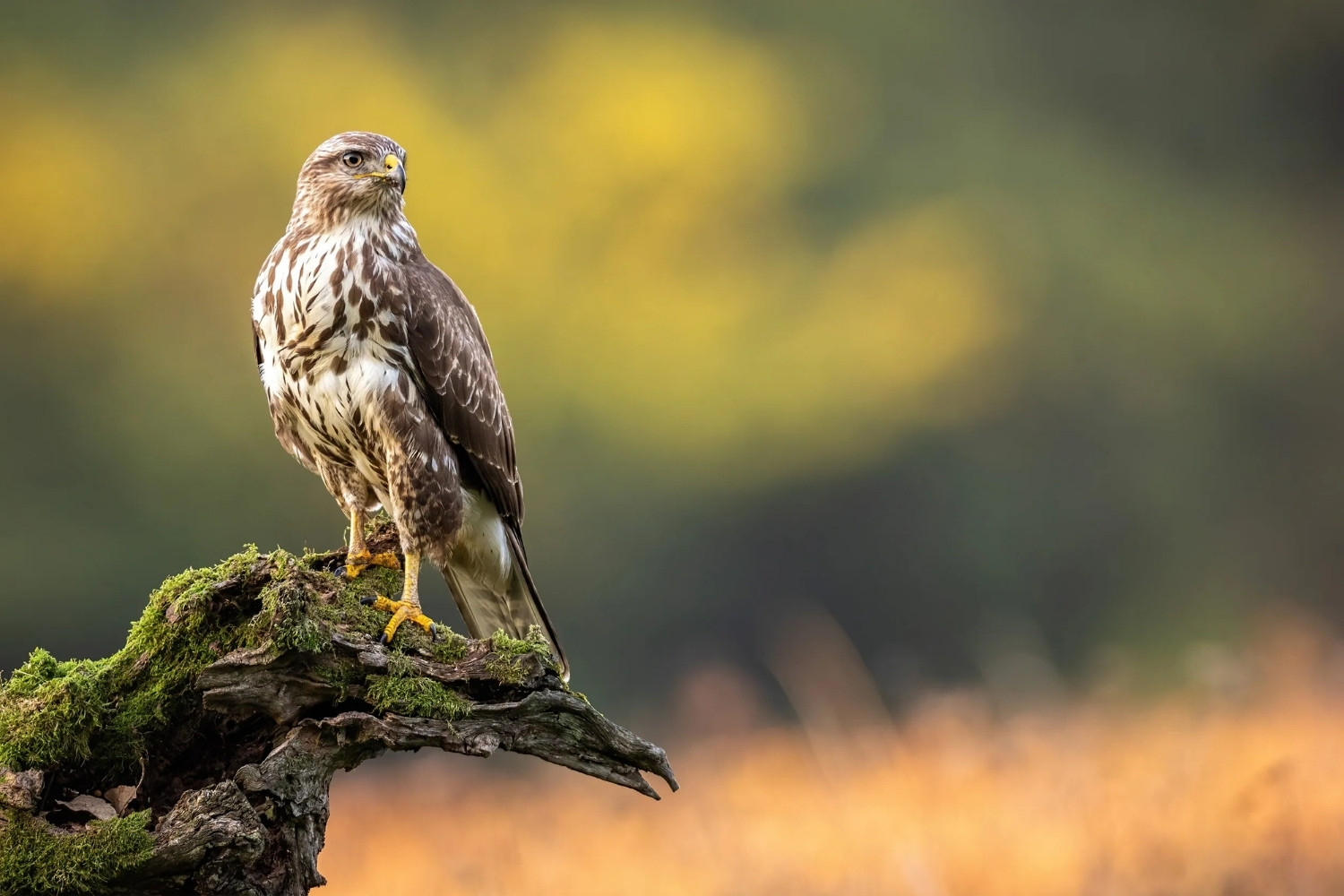
Buzzards are fascinating birds that often get confused with other raptors. These birds of prey belong to the genus Buteo and are known for their broad wings and robust bodies. Buzzards are found across various continents, including Europe, Asia, and North America. They play a crucial role in the ecosystem by controlling rodent populations. Did you know that buzzards can soar for hours without flapping their wings? Their keen eyesight allows them to spot prey from great heights. Despite their importance, many people still have misconceptions about these majestic birds. Let's dive into 27 intriguing facts about buzzards that will help clear up any confusion and deepen your appreciation for these incredible creatures.
Buzzards: Majestic Birds of Prey
Buzzards are fascinating creatures that soar through the skies with grace and precision. These birds of prey are often misunderstood, but they play a crucial role in the ecosystem. Here are some intriguing facts about buzzards that will give you a deeper appreciation for these majestic birds.
-
Buzzards belong to the Accipitridae family, which includes eagles, hawks, and kites.
-
They are found on every continent except Antarctica.
-
Buzzards have a wingspan that can reach up to 4.5 feet.
-
Their diet mainly consists of small mammals, birds, and carrion.
-
Buzzards have excellent eyesight, allowing them to spot prey from great distances.
-
They are known for their soaring flight, often seen gliding effortlessly on thermal currents.
Buzzard Behavior and Adaptations
Understanding the behavior and adaptations of buzzards can shed light on how they survive and thrive in various environments. These birds have developed unique traits that make them formidable hunters and survivors.
-
Buzzards are solitary hunters but may be seen in groups during migration.
-
They use their sharp talons to catch and kill prey.
-
Buzzards have a unique call that sounds like a high-pitched mewing.
-
They are known to use tools, such as sticks, to dig for food.
-
Buzzards can live up to 20 years in the wild.
-
They build large nests, often reusing the same nest year after year.
Buzzards in Culture and Mythology
Buzzards have been featured in various cultures and mythologies throughout history. Their presence in folklore and symbolism highlights their significance to human societies.
-
In ancient Egypt, buzzards were associated with the goddess Nekhbet, a protector of the pharaoh.
-
Native American tribes often viewed buzzards as symbols of renewal and transformation.
-
In medieval Europe, buzzards were sometimes seen as omens of death.
-
Buzzards are often depicted in art and literature as symbols of freedom and power.
-
They have been featured in numerous films and documentaries, showcasing their impressive hunting skills.
Conservation and Threats
Despite their adaptability, buzzards face several threats that impact their populations. Conservation efforts are essential to ensure their survival and maintain ecological balance.
-
Habitat loss due to deforestation and urbanization is a significant threat to buzzards.
-
Pesticides and pollutants can poison buzzards, leading to population declines.
-
Illegal hunting and trapping also pose risks to these birds.
-
Conservation programs focus on protecting habitats and reducing human-wildlife conflicts.
-
Public awareness campaigns aim to educate people about the importance of buzzards in the ecosystem.
Interesting Buzzard Facts
Buzzards have some unique and surprising characteristics that make them stand out among birds of prey. These interesting facts highlight their diversity and adaptability.
-
Some buzzard species, like the Common Buzzard, exhibit a wide range of plumage colors.
-
Buzzards can adapt to various habitats, from forests to grasslands to urban areas.
-
They are known to follow farmers' plows to catch insects and small animals unearthed by the machinery.
-
Buzzards have a slow, deliberate flight pattern, making them easily distinguishable from other birds of prey.
-
They play a vital role in controlling rodent populations, helping to maintain ecological balance.
The Final Flight
Buzzards are fascinating creatures with unique behaviors and characteristics. From their impressive wingspans to their keen eyesight, these birds of prey play a crucial role in maintaining the balance of their ecosystems. They help control rodent populations and clean up carrion, making them nature's cleanup crew. Understanding these birds better can foster appreciation and conservation efforts.
Next time you spot a buzzard soaring high, remember the incredible facts that make them so special. Whether it's their ability to glide for hours without flapping their wings or their sharp talons designed for hunting, buzzards are truly remarkable. Keep an eye out for these majestic birds and share your newfound knowledge with friends and family. The more we know, the better we can protect and appreciate the natural world around us.
Was this page helpful?
Our commitment to delivering trustworthy and engaging content is at the heart of what we do. Each fact on our site is contributed by real users like you, bringing a wealth of diverse insights and information. To ensure the highest standards of accuracy and reliability, our dedicated editors meticulously review each submission. This process guarantees that the facts we share are not only fascinating but also credible. Trust in our commitment to quality and authenticity as you explore and learn with us.
